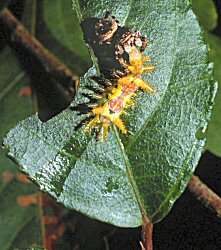For spider-strength silk go back to basics

If you want to spin silk like a spider then you need to rethink your starting material, Oxford University scientists have discovered.
The researchers have developed a new way of assessing the potential of the raw material – silk ‘dope’ – for producing fibres with the amazing properties of natural silks spun by spiders and silkworms. They found that the starting materials currently being tried, ‘cocktails’ of dissolved silk fibres, do not have the same flow properties as natural silk dope, and so cannot be spun into super-strong filaments.
A report of the research appears in this week’s edition of Polymer. It describes how Chris Holland and Professor Fritz Vollrath, together with Dr Ann Terry and Dr David Porter, from the Oxford Silk Group took unspun natural silk dope and compared it to artificial silk dope under shear forces similar to those encountered in a spider’s spinning duct. They found that natural and artificial dopes had fundamentally different flow properties.
Native silk dope taken straight from the gland can be drawn into strong fibres without chemical assistance – as demonstrated by the old fisherman’s way of drawing the glands of silkworms in order to ‘spin’ his ‘silk cast’ fishing line. Yet the fibres spun from artificial dope material, which have been ‘reconstituted’ by dissolving silk fibres, cannot be spun into any type of serious filament without chemical treatments, and even then these do not approach the strength of natural silk.
Clearly, native silk dopes have the innate ability to form into a fibre, which is lost in translation when attempting to create artificial silk dope. Discovering the mechanisms behind this seemingly effortless process will be a crucial step towards the biomimetic spinning of artificial silk fibresusing the animal’s own technology.
Professor Fritz Vollrath said: ‘To mimic the way in which animals spin silk we believe it will be necessary first to match the flow properties of reconstituted and native silk feedstocks. This could ultimately lead to landing one of Nature’s greatest catches – high performance fibres, naturally produced.’
Source: University of Oxford















